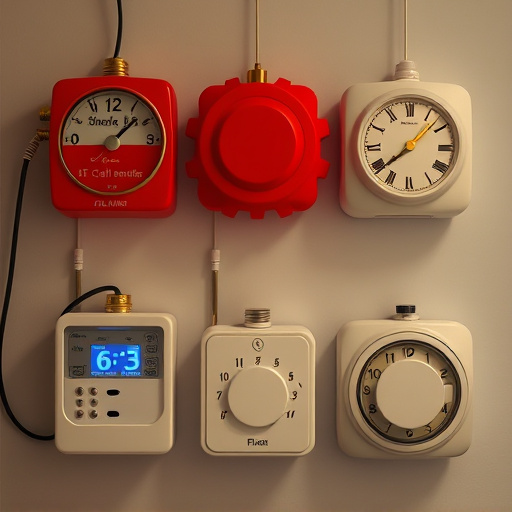Personal alarms designed for emergencies should produce sounds reaching at least 100 feet (30m) to cut through urban noise and attract help. Modern devices feature high-pitched tones, strobe lights, and vibrations for multi-sensory alerts. When choosing a personal safety device, consider its sound range (How Far Personal Alarm Sounds), GPS tracking, automatic fall detection, and strategic placement for optimal effectiveness in emergencies. Local laws govern alarm volume and duration, so comply to avoid legal issues while ensuring responsible use of these essential tools.
Personal safety is paramount, especially in emergency situations. This article explores personal alarm systems as powerful tools for protection. We’ll delve into the mechanics of these devices, highlighting key features that ensure effectiveness. From understanding how far personal alarm sounds can reach to optimal placement strategies, we cover everything you need to know. Additionally, we examine legal implications and your rights when carrying such a device.
- Understanding Personal Alarm Systems
- Key Features of Effective Alarms
- Emergency Situations These Devices Address
- Placement and Use Cases for Optimal Protection
- Legal Implications and Personal Rights
Understanding Personal Alarm Systems
Personal alarm systems are designed to attract attention and signal for help in emergency situations. One key component to consider is how far the personal alarm sounds. The range can vary significantly depending on the device, with some offering signals as far as 100 feet (30 meters) away. This distance is crucial for ensuring that your alarm is heard by passersby or emergency services, especially in noisy urban environments where other sounds might obscure it.
When choosing a personal alarm, understanding its sound range is essential. Some devices emit high-pitched screams or loud sirens, which can be effective in drawing attention quickly. Additionally, modern personal alarms often incorporate strobe lights to enhance visibility, further assisting in emergency situations.
Key Features of Effective Alarms
Effective personal alarms are designed to attract attention and alert others in emergency situations, often featuring loud sounds that can travel surprisingly far. The key is to choose a device with a high decibel level, typically measured in dB (decibels). A good personal alarm should emit a sound of at least 100dB, which is approximately the same volume as a power lawnmower or a busy city street. This intensity ensures that the alarm is heard above ambient noise, even in noisy environments.
Additionally, modern alarms often incorporate strobe lights or vibration features to enhance their effectiveness. Flashing lights can help draw attention and signal distress, while vibrations can be useful for individuals who are hard of hearing or in situations where loud sounds may not be appropriate. These multi-sensory alerts significantly improve the chances of rescue, especially in challenging conditions or when assistance is delayed.
Emergency Situations These Devices Address
Personal safety devices are invaluable tools in emergency situations, offering individuals a sense of security and a means to attract attention quickly. These devices are designed to emit loud, high-pitched alarms that can travel up to 100 feet or more, ensuring maximum reach and effectiveness. The range of these personal alarms is particularly crucial when faced with dangers like assault, domestic violence, or getting lost in unfamiliar places. Their piercing sounds serve as a distress signal, alerting nearby bystanders, authorities, or even emergency response teams to the user’s location and need for assistance.
Additionally, some devices incorporate features like GPS tracking and automatic fall detection, providing real-time data that aids in swift response times. This technology is especially beneficial for individuals who may be at higher risk, such as seniors living alone or victims of domestic abuse. How far a personal alarm sounds is just one aspect; these devices offer a comprehensive solution by combining loud alarms with advanced communication and tracking capabilities to ensure users’ safety during emergencies.
Placement and Use Cases for Optimal Protection
The optimal placement of personal safety devices, such as alarms, is crucial for maximum effectiveness during emergency situations. For outdoor scenarios, it’s recommended to carry or attach the device close to your waist, ensuring easy accessibility. This strategic position allows for quick deployment when needed, especially if you’re in a hurry or disoriented. In public spaces, placing the alarm within arm’s reach of where you’re sitting or standing can significantly enhance your protection.
When it comes to personal alarms, understanding how far they can sound is essential. Modern personal alarms are designed to emit a loud, distinct sound that can travel up to 100 meters (approximately 328 feet) in ideal conditions. This range ensures that even if you’re unable to physically defend yourself, the alarm’s piercing sound can attract nearby attention and deter potential threats, providing crucial time for help to arrive.
Legal Implications and Personal Rights
When considering personal safety devices, such as personal alarms, it’s crucial to understand the legal implications and your rights. The volume and duration of a personal alarm’s sound are regulated by local laws, which vary significantly across regions. While some areas mandate specific decibel levels and time limits for these devices, others have less stringent guidelines. It’s essential to research and comply with these regulations to avoid any legal repercussions.
Personal alarms offer individuals the ability to attract attention and deter potential threats quickly. However, their use also carries personal responsibilities. Users must ensure they employ these devices responsibly, respecting privacy and public safety. Understanding your rights and the rules surrounding personal alarm sounds empowers you to protect yourself effectively while adhering to the law.
Personal alarm systems offer a powerful tool for personal safety, with their distinct and far-reaching sounds capable of drawing attention and assistance during emergencies. By understanding key features, familiarizing yourself with various emergency situations they address, and ensuring optimal placement, these devices can provide crucial protection. Moreover, being aware of legal implications and personal rights empowers individuals to use them effectively. When used responsibly, personal alarms can make a significant difference in safety and security, acting as a vital symphony in navigating potential hazards.
